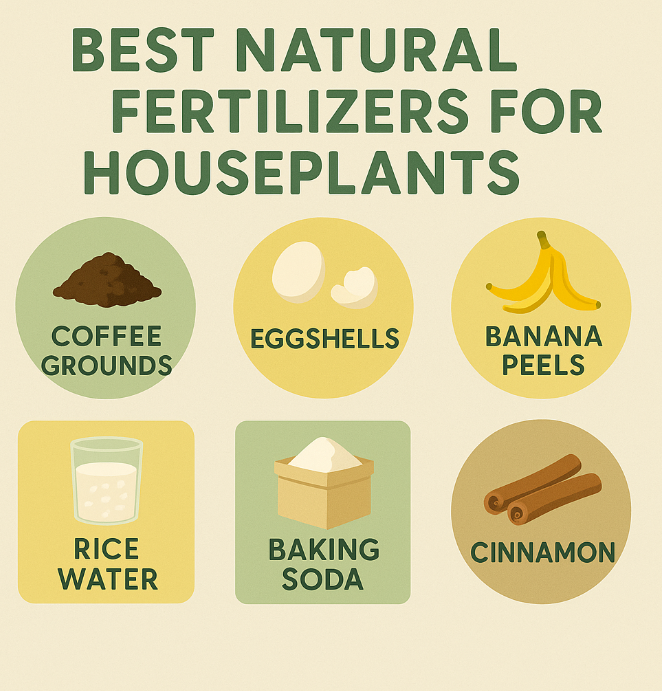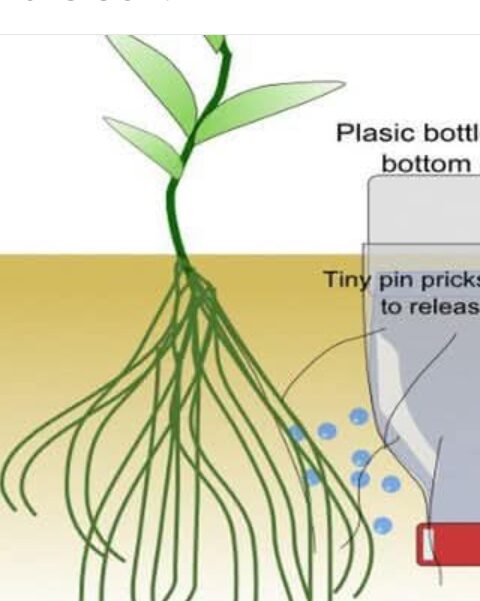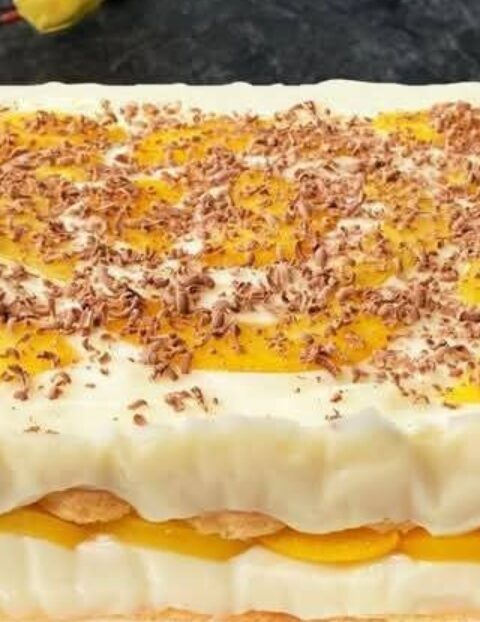Grow a Thriving Indoor Garden with Everyday Kitchen Items: DIY Natural Fertilizers for Happy Houseplants
Imagine transforming your morning coffee ritual into a nutrient boost for your beloved fiddle leaf figs, or turning those banana peels destined for the bin into a blooming spectacle on your windowsill. With a few simple kitchen scraps, you can create an organic houseplant fertilizer regimen that’s not only cost-effective but also sustainably upcycles everyday waste. Say goodbye to store-bought chemicals and hello to lush, vibrant growth straight from your kitchen.
Whether you’re a plant parent seeking the perfect “food” for your fiddle leaf fig or a green-thumbed guru wanting to experiment with DIY sustainable plant care, this ultra-detailed guide will show you how to:
- Unlock the hidden potential of coffee grounds, eggshells, banana peels, cinnamon, baking soda, and rice water
- Follow step-by-step instructions (with pro tips) to apply each natural fertilizer safely
- Rotate treatments for maximum benefit without overloading your soil
- Enjoy eco-friendly, cost-saving, high-performance results in every pot
Why Use Kitchen Scraps as Fertilizers?
- High Nutrient Content: Coffee grounds add nitrogen, eggshells supply calcium, and banana peels deliver potassium.
- Sustainability: Repurpose waste, reduce landfill contributions, and embrace zero-waste gardening.
- Cost Savings: Eliminate monthly fertilizer purchases—your kitchen becomes your garden’s supply store.
- Soil Health: Organic matter improves soil structure, moisture retention, and microbial activity.
Materials You’ll Need
- Coffee Grounds: Used, cooled (from drip or espresso)—ideal for nitrogen-loving foliage.
- Eggshells: Rinsed, fully dried, and finely crushed.
- Banana Peels: Fresh peels, chopped into 1–2″ pieces.
- Cinnamon Powder: Ground cinnamon for antifungal dusting.
- Baking Soda: Food-grade, mixed into spray (see instructions).
- Rice Water: Water from rinsing or soaking rice—strained to remove particles.
- Basic Tools: Small trowel, sprinkling cup, spray bottle, labels, and marker.
Step-by-Step Guide to Applying Kitchen Fertilizers
1. Coffee Grounds Application
- Allow used coffee grounds to cool completely.
- Sprinkle a thin, even layer (no more than 1 tbsp per 6″ pot) onto the topsoil.
- Gently work grounds into the top ½″ of soil with a trowel.
- Water lightly to help nutrients penetrate.
Pro Tip: For heavy feeders like peace lilies, mix grounds into your potting mix at a 1:10 ratio for a balanced slow-release nitrogen boost.
2. Eggshell Calcium Boost
- Collect, rinse, and let eggshells air-dry completely (24–48 hours).
- Crush shells into a fine powder with a mortar & pestle or blender.
- Work 1 tsp of powder into the soil around the root zone of cacti, snake plants, or pothos.
- Lightly water to settle.
Pro Tip: For orchids in bark mix, sprinkle sparingly to avoid moisture-retaining blockages—no more than ½ tsp per medium-sized pot.
3. Banana Peel Potassium Charge
- Chop peels into small pieces (1–2″).
- Bury peel pieces 1–2″ below the soil surface, near the drip line of hydrangeas, money trees, or rose cuttings in containers.
- Cover with a thin soil layer to discourage pests.
Pro Tip: For faster release, blend peels with a little water into a slurry and water plants with the mixture once a month.
4. Cinnamon Antifungal Shield
- Dust a light layer (~¼ tsp) of ground cinnamon evenly over the soil surface of ZZ plants, spider plants, and cacti.
- Reapply after watering dries to maintain protection.
Pro Tip: Mix a pinch into potting mix when repotting to preempt fungus gnats in soil prone to dampness.
5. Baking Soda Fungal Spray
- Mix ½ tsp baking soda with 1 cup lukewarm water in a spray bottle.
- Lightly mist leaves of peace lilies, aloe, or cast iron plants, avoiding soil contact.
- Wipe off excess after 30 minutes to prevent sodium buildup on foliage.
Pro Tip: Add a drop of mild dish soap to improve spray adhesion—test on a single leaf first.
6. Rice Water Gentle Tonics
- After rinsing rice, collect the cloudy water in a container.
- Let settle for 5 minutes, then pour off the clear liquid.
- Use as a monthly water replacement for rubber plants, corn plants, or ivy.
Pro Tip: For extra oomph, ferment rice water for 24 hours before use, then dilute at a 1:2 ratio with fresh water.
Safety Guidelines & Monthly Rotation
- Rotate Monthly: Use one treatment each month to prevent nutrient overload and maintain balance.
- Monitor Soil pH: Excess coffee grounds can acidify soil; test pH quarterly and adjust as needed.
- Avoid Overapplication: Too much banana or rice water can cause waterlogging or starchy buildup.
- Label Treatments: Note date and type of application on pot markers to track what works best.
10 Expert Quotes on Natural Houseplant Care
- “The best fertilizer is the gardener’s shadow.” — Chinese Proverb
- “Plants are like people; feed them kindness and watch them flourish.” — Monty Don
- “Organic is not a trend; it’s a return to balance.” — Alys Fowler
- “Recycling begins at home—your kitchen is a garden’s goldmine.” — Alan Titchmarsh
- “Coffee grounds gave my peace lilies the richest green they’ve ever shown.” — Lisa Eldred Steinkopf
- “Eggshell calcium prevents blossom end rot in tomatoes—magic you already have!” — Jill Nokes
- “Banana peels are the original slow-release fertilizer.” — Piet Oudolf
- “Cinnamon is the unsung hero of fungus prevention.” — Carol Klein
- “A pinch of baking soda saved my spider plants from mildew.” — Joe Lamp’l
- “Rice water is a gentle tonic—think of it as plant probiotics.” — Gertrude Jekyll
10 Voice-Search–Optimized FAQs
- How often should I apply coffee grounds to houseplants?
Monthly applications—no more than 1 tbsp per 6″ pot—to avoid nitrogen burn. - Can I use eggshell powder for all indoor plants?
Best for calcium-hungry species like cacti and pothos; use sparingly in bark mixes. - Will banana peels attract fruit flies?
Bury peels below soil and cover with a thin layer to deter pests. - Is cinnamon safe for all plants?
Yes—it’s a natural antifungal, but don’t exceed ¼ tsp per pot. - How do I make baking soda spray for mildew?
Mix ½ tsp baking soda with 1 cup water, add a drop of dish soap, and mist leaves lightly. - Does rice water feed my plants?
It provides trace nutrients and beneficial microbes—use once a month. - Can I combine these fertilizers?
Rotate treatments monthly rather than mixing to prevent chemical imbalances. - How do I test my soil pH after using coffee grounds?
Use a digital pH meter or test kit quarterly; adjust with lime if too acidic. - What’s the best way to avoid root rot?
Ensure proper drainage and avoid waterlogging when using organic amendments. - Are these kitchen fertilizers safe for pets?
Generally yes, but avoid concentrated sprays; keep curious cats and dogs from direct contact.
5+ Related Articles & Further Reading
- Ultimate Indoor Seed-Starting Guide
- Companion Planting for Healthier Vegetables
- Top 5 Organic Fertilizers for Your Veggie Patch
- Season Extension Techniques for Cold Climates
- Creating a Natural Bug Hotel






